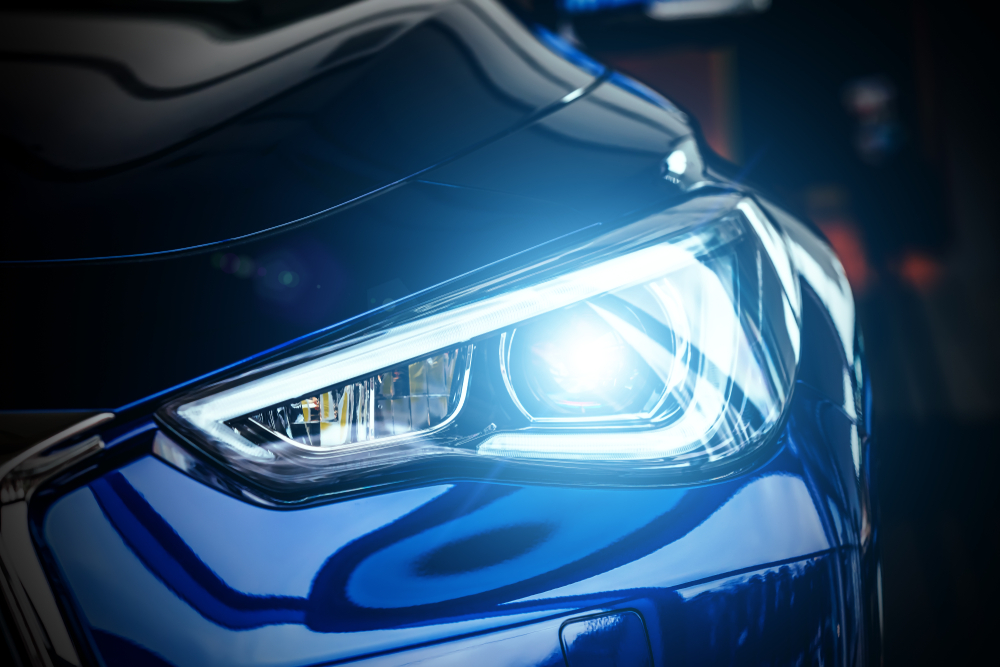Imagine this: you’re driving down the highway, music on, coffee in hand, feeling unstoppable—until suddenly your car locks itself, the stereo blasts at full volume, and your headlights start flashing like you’re in a disco. Creepy? Definitely. Impossible? Not anymore. Modern cars are basically rolling computers, and like any tech, they can be accessed, manipulated, or even controlled from afar.
The more “smart” our cars become, the more we trade convenience for vulnerability—and most drivers have no idea just how much control they’ve already given away.
1. Door Locks
Let’s start with the obvious: your car’s locks can easily be controlled remotely. Automakers designed this feature so you can unlock your car from an app or have your dealership help if you’re locked out. But if the connection can unlock your doors, someone else with the right access can do it too. It’s been demonstrated countless times by security researchers who’ve remotely opened vehicles just to prove how easy it can be. So next time you use your phone to unlock your ride, remember—it’s not just you with that power.
2. Engine Start and Stop
Remote start sounds convenient, right? Who doesn’t love stepping into a pre-warmed car on a cold morning? But this same technology means your car’s ignition can be triggered—or disabled—from anywhere if someone knows what they’re doing. Hackers and some overreaching manufacturers can both theoretically send a signal that kills your engine while you’re driving.
3. GPS Tracking
You might think you’re the one in charge of your car’s navigation system, but your GPS is often sending data far beyond your dashboard. From manufacturers to third-party apps, multiple entities can monitor where your car goes, how fast it travels, and even how often you visit certain locations. The creepy part is that this data isn’t always anonymous—it can be tied directly to your vehicle and personal identity. And because GPS systems can be accessed remotely, anyone with the right credentials can pinpoint your location in real time. You might not have invited Big Brother on your road trip, but he’s definitely along for the ride.
4. Windows and Sunroofs
Some vehicles let you roll them down with an app to “air out” the car before you get in. But researchers have shown that these same controls can be hijacked, leaving your car open to weather—or worse, theft. Imagine returning to find your windows mysteriously down after a rainstorm, with no explanation. Now you know how much a hassle this can be.
5. Headlights and Hazard Lights
You’d think lights would be harmless, right? Wrong. Hackers have demonstrated the ability to flashlights on and off rapidly or keep them stuck in one mode to drain the battery. Even automakers sometimes use light signals as part of diagnostic or remote-control functions, meaning these features are not entirely locked down. It’s eerie to think someone could make your car “blink” without you ever touching the switch.
6. Horn and Alarm Systems
Picture your car alarm going off in the middle of the night for no reason. You rush outside in pajamas, but there’s no sign of a break-in. Some car manufacturers even offer “kill switch” style controls that include setting off alarms to get your attention. It’s the ultimate digital embarrassment, and it’s not always in your hands to stop it.
7. Climate Control Systems
Remote climate control sounds like the height of luxury—cooling the car before you hop in during summer or warming it up before winter drives. But like every other connected system, it’s open to manipulation. The same network that lets you control your car’s temperature from your phone can be hijacked to crank the heat to unbearable levels or blast cold air unexpectedly. It’s more than uncomfortable—it’s a reminder that your “smart” systems are always listening for commands, even if they’re not coming from you. A cozy ride can turn chaotic in seconds.
8. Infotainment and Audio
Modern infotainment systems are practically computers on wheels—complete with Bluetooth, Wi-Fi, and voice assistants. But that interconnectivity makes them a huge target for remote access. Once someone gets in through the audio system, they can manipulate your radio, navigation, or even connect to other car functions. Some hacks have even involved blasting music at maximum volume or replacing songs with unwanted sounds.
9. Braking Assistance Systems
This one’s the real nightmare scenario. Many new cars have automated braking and driver-assist systems that can apply brakes independently to prevent collisions. The catch? Cybersecurity experts have warned that tampering with braking systems isn’t just possible—it’s been proven in controlled tests. The idea that someone could slow or stop your vehicle from a distance feels straight out of a movie, but in today’s hyper-connected automotive world, it’s alarmingly real.
10. The Car’s Entire Operating Software
Here’s the big one—modern cars can receive “over-the-air” software updates, meaning manufacturers can change your vehicle’s programming without you ever visiting a dealership. That’s convenient when it’s a safety patch or performance improvement. In some documented cases, automakers have disabled cars entirely over payment disputes or technical errors. It’s a sobering thought: the car in your driveway can technically be “turned off” by someone halfway across the country.
The Trade-Off Between Convenience and Control
Every connected feature we celebrate comes with a trade-off: a little less privacy, a little less autonomy, and a lot more reliance on invisible systems we can’t fully control. But as car owners, we love the idea of automation and remote management until it turns against us.
Have you ever experienced strange car behavior or unexpected remote-control issues? Share your thoughts, experiences, or cautionary tales in the comments.
You May Also Like…
10 Safety Features Cars No Longer Include Standard
8 Car Maintenance Myths Mechanics Say Are a Waste of Cash
Could A Car Lease Be the Worst Financial Mistake You Ever Make?
Invest in Your Future: Building a Career in the Automotive Industry
5 Auto Brands That Make Third-World Versions of Their Cars With Lower Safety Features


